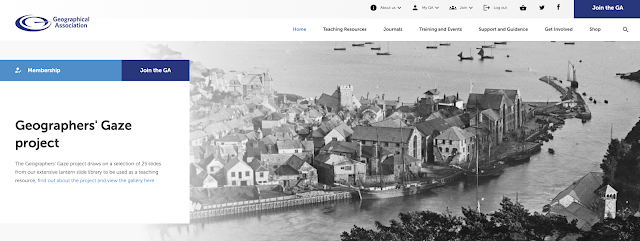I worked on this project with Peter Fox, another former President for over a year and a half on and off, with several meetings at Solly Street and some other work remotely.
Isabel Richardson had done a great deal of preparatory work at Solly Street on the lantern slide collection, which used to number in the tens of thousands. Isabel had been cataloguing the collection.
The plan was to make use of a fund generously donated by former Honorary Treasurer Brian Ellis, to bring these images back out into the open, and provide some ideas for their use in the classroom as well as some context.
I worked with Peter Fox and we co-wrote the accompanying text for each image on the GA website.
The website area is now live, and there is also an article that I have written for the latest GA Magazine.
My original version of the text was a little longer than the final version, which we agreed needed to be a bit tighter to increase the instant accessibility of the resource.
For those who may want a little extra detail on the images, you can download the longer version from Slideshare here - it's over 30 pages long:

Comments